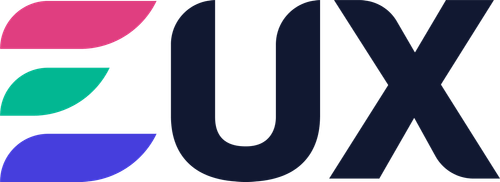It’s a bold new world in enterprise software user experience. Long gone are the days when clunky interfaces and convoluted processes were the norms. Today, enterprise software user experience stands at the forefront of business success, weaving together productivity and satisfaction with an elegant thread.
Dive into this read to unlock how quality enterprise UX can not only boost your team’s output but also simplify those hair-pulling complex tasks that everyone dreads. Let’s unravel these designs that smartly meet both novice needs and expert expectations, aligning tightly with business goals along the way.
You’re about to discover design principles tailored for professionals in vast organizations—where good UX is no longer just nice-to-have; it’s essential for thriving in today’s fast-paced markets.
The Significance of User Experience in Enterprise Software
Imagine enterprise software as a busy highway; user experience (UX) is the set of road signs that guide drivers smoothly to their destination. In large organizations, good enterprise UX doesn’t just make the ride less bumpy—it powers productivity and cranks up sales, while keeping employee satisfaction on cruise control.
Bridging the Gap Between Power Users and Intuitive Design
In an ideal world, professional users would have interfaces that are both powerful and easy to use—think Iron Man’s suit controls but for your HR management system. The importance of user experience in enterprise software lies in this balance: catering to both novices who need simplicity and experts demanding advanced functionality. After all, when you get it right, it’s like watching someone effortlessly navigate a complex subway map—they know exactly where they’re going because the design speaks their language.
User expectations can vary wildly within an organization. Some employees perform tasks with laser-focused precision requiring deep feature sets; others may only dip into systems occasionally needing clear signposts—a stark contrast from consumer apps designed for broad appeal. But here’s a stat worth noting: businesses that invest in quality enterprise UX see upticks across boardrooms—from efficiency metrics through sales numbers—and happier staff meetings too.
Aligning Business Goals with User Needs
A business runs on its goals like engines run on fuel—but without aligning these objectives with actual user needs, you might as well be driving blindfolded down our metaphorical highway. That means designing solutions isn’t about guesswork; it’s about getting under the hood with real users through usability tests or drawing key insights from data visualization tools.
An interface should help lead employees towards achieving goals efficiently rather than being time-consuming puzzles to solve—goodbye steep learning curves. By reducing cognitive load we allow professionals more brain space for creativity instead of navigating poorly-designed management systems—a win-win situation where good business thrives alongside superior UX strategy.
Legacy system consolidation often lurks behind many enterprises’ walls, adding layers upon layers onto what could be sleek design processes if tackled head-on by experienced ux designers.
However subtle or obvious differences between buyers’ choices versus daily grind realities faced by end-users shouldn’t dictate how intuitive navigation takes shape—or else risk bad ux rearing its ugly head amidst tight deadlines.
And remember those boosts I mentioned earlier? Studies suggest companies investing diligently into creating exceptional experiences aren’t just building better relationships with customers, they’re also setting themselves up for increased revenue and growth. So, by focusing on the customer experience, businesses can actually see tangible benefits that go straight to their bottom line.
Key Takeaway:
Think of enterprise UX as your GPS, guiding you to higher productivity and sales with ease. It’s about striking that perfect balance between power and simplicity, just like Iron Man’s suit controls. Good UX means meeting the unique needs within an organization—making everyone from novices to experts feel at home.Tune your business goals to user needs for a smooth ride without blindfolds. Ditch guesswork for real insights through usability tests or data tools. Aim for interfaces that clear the path towards efficiency—not puzzles that waste time—and watch creativity soar along with good business outcomes.
Design Principles for Complex Enterprise Solutions
The art of enterprise UX design lies in crafting experiences that not only meet but exceed the expectations of professional users. In large organizations, where software is more than just a tool—it’s part of the daily grind—design principles must evolve to address both functionality and usability and ethical design.
Crafting Interfaces That Grow with Users
In product design for complex enterprise solutions, it’s critical to consider interfaces that scale with user expertise. Unlike consumer apps designed for casual use, an enterprise app serves power users who interact with niche software day after day. This creates a unique dynamic where learning curves aren’t inherently bad—they’re an investment into greater efficiency down the road.
Simplify enterprise UX cautiously; too much simplification can strip away vital features or oversimplify tasks which could limit decision-making freedom. Consider how pilots rely on intricate dashboards rather than simplified car dashboards; they need detailed information at their fingertips to make informed decisions swiftly—a sentiment echoed by The Learning Curve Design Problem. Just as pilots grow accustomed to their controls over time, so do professionals using robust management systems within enterprises.
Good business hinges on enabling employees perform efficiently through quality enterprise UX design. By providing constant opportunities for growth within the application itself, we empower users—not overwhelm them—to achieve goals without facing steep learning penalties or wasting precious time.
Bridging the Gap Between Power Users and Intuitive Design
A key insight when navigating between intuitive navigation and complexity is recognizing that one size does not fit all in experience design. An HR management system may seem daunting at first glance because of its extensive capabilities but becomes easier understand once you recognize patterns in data visualization or common paths through user journeys.
To ensure long-term adoption and boost productivity across large companies, designs should lead employees naturally towards mastery without causing undue cognitive load from overly complex processes. The focus remains firmly on helping actual users save time while achieving their objectives seamlessly—an essential element good enterprise ux designers never overlook as they craft creative solutions tailor-made for real-world scenarios such as those found within legacy systems often present in large organizations.
Aligning Business Goals with User Needs
An effective strategy revolves around aligning what businesses want out of their tools—increased sales figures perhaps—with what end-users actually need: efficient workflows leading toward quicker task completion times inside complex environments like those offered by comprehensive HR management platforms used widely among enterprises today. By engaging with professional users throughout the design process, we make sure that software usability is at the forefront, addressing real-world needs rather than relying on guesswork or untested theories—as can be the case when decisions are made without direct user input.
Key Takeaway:
Design enterprise software that grows with the user, balancing complexity and intuitive use. Let them master their tools without getting overwhelmed by learning curves or unnecessary features.
Overcoming Challenges Unique to Enterprise UX Design
Designing for enterprise software is a beast of its own. Unlike consumer apps, where delight and whimsy might win the day, enterprise solutions need to be all about efficiency and helping employees perform at their best. However this comes with its own set of ux design challenges.
The Disconnect Between Decision-Makers and End-Users
In the world of enterprise services, there’s often a chasm between those who buy the software (think C-suite execs) and those who use it daily (hello, frontline workers). The bosses want numbers; they crave ROI data visualization that can drive informed decisions. Yet users? They’re after something intuitive—software design that makes their job easier to understand and less time consuming.
To bridge this gap, we’ve got to put on our detective hats. Conducting research in enterprises means getting into the trenches with real users—observing them like David Attenborough would watch wildlife—to gather key insights into what helps or hinders their workflow. This isn’t just about usability tests in some sterile lab; it’s fieldwork where you witness first hand whether your interface leads employees toward achieving goals or sends them down rabbit holes.
Consolidating Legacy Systems Without Losing Your Mind—or Users
Merging legacy systems into sleek new designs feels like trying to fit square pegs into round holes—it takes time but imagine if you could make everyone happy. Here lies one of our grandest challenges: how do we keep all that critical functionality from older management systems while offering up an experience as fresh as avocado toast?
This delicate dance calls for creative solutions—a design process steeped in empathy yet grounded by practicality. It’s finding ways so complex information doesn’t overwhelm professional users but instead provides constant support throughout their user journeys.
Conducting Research That Actually Reflects How Employees Work
We know designing enterprise applications isn’t a walk in the park—sometimes more akin to navigating through brambles with thorns called cognitive load poking at every turn—but conducting thorough research paves way for smoother paths ahead.
You’ll see many large companies dive deep when gathering feedback because they understand good business hinges on good enterprise ux—the kind that allows seamless interaction even within intricate ecosystems such as HR management platforms or hefty databases powering large organizations.
Remember folks: bad UX won’t just annoy someone looking for cat videos online—it could mean significant losses when productivity dips because tools are too clunky or difficult to navigate. So, let’s keep our designs intuitive and user-friendly.
Key Takeaway:
Designing enterprise software? Focus on efficiency and making employees’ lives easier. Get into the trenches to understand their needs—this means more than usability tests, it’s about real-world observations. Remember, merging old with new requires creativity without overwhelming users with complexity.
Comparing Consumer vs. Enterprise User Experience
The tug-of-war between simplicity and functionality is the crux of enterprise UX, where every design decision can ripple through an organization’s workflow. When you step into the world of enterprise applications, it feels like moving from a speedboat to a cruise ship—both traverse oceans but with different user expectations and experiences.
Simplicity Meets Functionality
Gone are the days when clunky interfaces were synonymous with power—the shift towards cleaner designs in apps doesn’t mean that enterprises have tossed complexity overboard. Instead, they’re navigating toward more intuitive navigation systems that allow professional users to steer through their tasks without getting lost at sea. This trend has its roots in consumer UX, which often spoils us with streamlined interactions; now those waves are lapping against the shores of enterprise software design.
In designing for these environments, we acknowledge a key distinction: while consumer apps play nice with our limited attention spans by offering straightforward journeys, complex enterprise solutions need to chart out courses that cater to diverse operational needs within large organizations. Herein lies an interesting observation about how is Enterprise UX different from Consumer UX—it takes time and effort for employees to learn robust systems well enough to sail smoothly.
Crafting Interfaces That Grow with Users
It’s essential not only for newbies but also seasoned sailors of software seas—expert users who navigate these waters daily—to find value in an application’s depths beyond first use. Yes, learning curves aren’t inherently bad; steep learning can lead users up mountains worth climbing if what awaits them at the summit streamlines achieving goals or makes data visualization clearer than ever before seen through spyglasses.
A good business understands this balance as it sets sails on crafting interfaces that grow alongside its crew members’ expertise levels without overwhelming them right off the dock—a strategy akin to providing constant wind for sails rather than sporadic gusts The Learning Curve Design Problem. Thus simplifying cautiously becomes less about stripping away tools and more about ensuring each instrument on deck serves its purpose elegantly without adding unnecessary cognitive load.
The Disconnect Between Decision-Makers and End-Users
Navigating more into challenges unique to designing such digital vessels reveals potential storms ahead: sometimes captains making purchasing decisions might not foresee all weather conditions faced by their crews—the end-users—which could result in buying sleek-looking ships ill-equipped for rough tides ahead. It’s crucial that decision-makers weigh the functional needs against aesthetic appeal, prioritizing a robust framework that can withstand any unforeseen digital squalls. Learn how our enterprise software development services prepare you for smooth sailing.
Key Takeaway:
Enterprise UX is a voyage of balancing simplicity with functionality, steering away from clunky interfaces to intuitive navigation that meets complex operational needs. It’s about crafting user experiences that grow with the user and ensuring tools serve their purpose without overwhelming.
Best Practices in Creating Exceptional Enterprise Software Experiences
Creating a top-notch user experience for enterprise software is like crafting a bespoke suit—it must fit the unique needs of professional users while remaining flexible enough to accommodate future growth. It’s about blending the sophistication needed by power users with intuitive navigation that guides even those less familiar.
Bridging the Gap Between Power Users and Intuitive Design
The art of UX design within enterprise applications lies in serving up complexity on an easy-to-navigate platter. Think about it; you wouldn’t give someone directions to a destination using only longitude and latitude—users need recognizable landmarks. Similarly, quality enterprise UX takes time but results in interfaces where simplicity meets functionality, letting both novice and expert users achieve their goals without getting lost in unnecessary details.
A good business understands this delicate balance because bad UX can be as glaring as showing up to a board meeting wearing flip-flops—a definite no-go. The key is ensuring that your design solutions provide constant support through every twist and turn of complex processes, making them easier to understand so everyone can save time and boost productivity.
Aligning Business Goals with User Needs
To create exceptional experiences, one must align business objectives with what actual users crave from their tools: efficiency without steep learning curves or being bogged down by cognitive load. After all, large organizations don’t have room for error when employees perform critical tasks across management systems daily. This alignment leads not just to products that look good but also function seamlessly—much like pairing a fine wine with the perfect meal; they’re meant for each other.
Anchoring this philosophy are informed decisions made possible through usability tests conducted early on during the designing process—because who better than real users can reveal if your solution really hits home? So go ahead, explore services tailored specifically towards enterprises, aiming at reducing any disconnect between decision-makers’ intentions and end-users’ realities.
Crafting Interfaces That Grow With Users
Consider how daunting HR management software appears at first glance—but what if it were designed such that familiarity breeds comfort over time? That’s right; we’re talking about crafting an interface that grows alongside its user’s expertise level—the kind where today’s pain points become tomorrow’s muscle memory triumphs. And let’s not forget legacy systems which often resemble puzzles left by ancient civilizations: challenging yet rewarding once mastered thanks to well-thought-out consolidation efforts into more modern solutions.
The Learning Curve Design
Key Takeaway:
Create a seamless enterprise software experience by blending sophisticated functionality with intuitive design. Think tailored suits: it should fit all users and grow with them, turning today’s challenges into tomorrow’s wins.
Conclusion
So, you’ve navigated the ins and outs of enhancing enterprise software user experience. It’s clear that blending intuitive design with functionality matters—a lot.
Remember this: a well-crafted UX can skyrocket productivity and make complex tasks less daunting. We learned that it takes time to balance learnability with long-term efficiency but get it right, and your employees will thank you.
Bear in mind, legacy systems needn’t be your downfall; they’re an opportunity to innovate. And never forget, good business hinges on meeting actual users’ needs—not just what looks good on paper.
In sum, designing solutions for large organizations is both art and science. The key insights? Listen to real users, keep interfaces clean yet capable, and always aim for a seamless flow between user expectations and business objectives.
Your takeaway? Let quality enterprise software user experience lead the way—it’ll save time now and headaches later!




